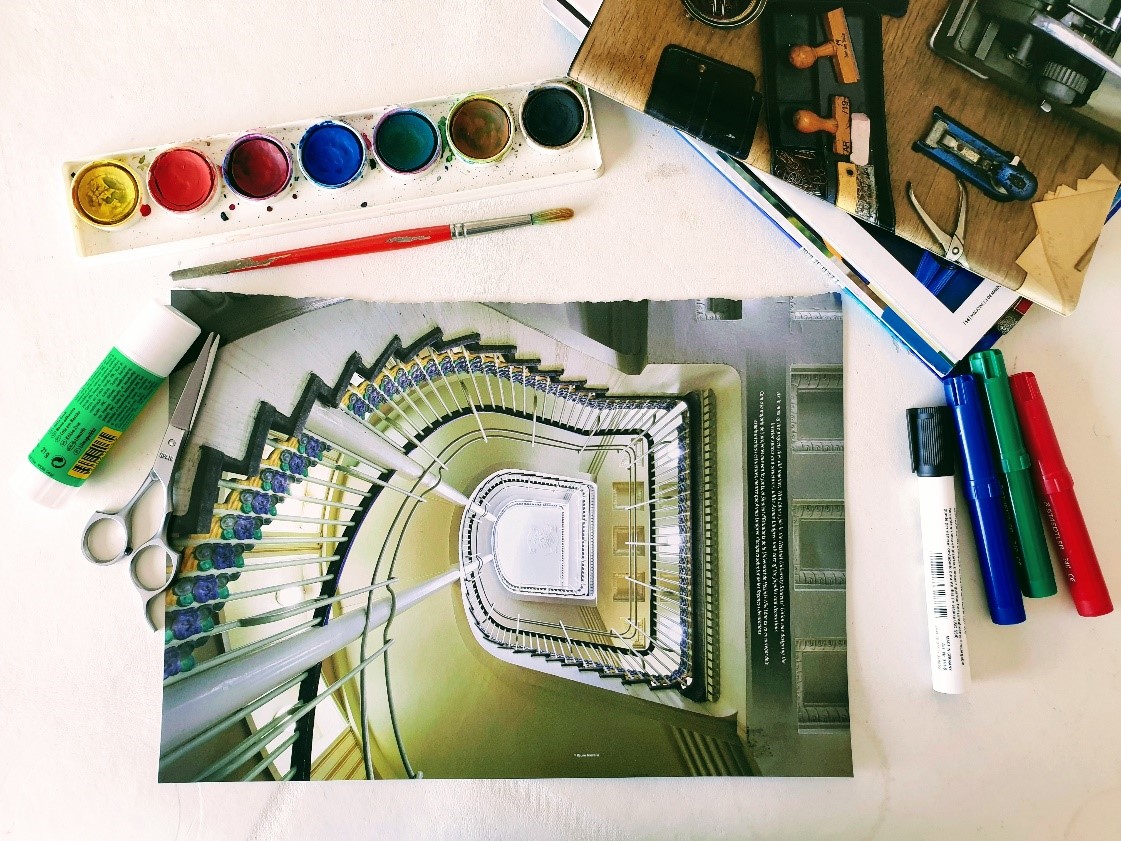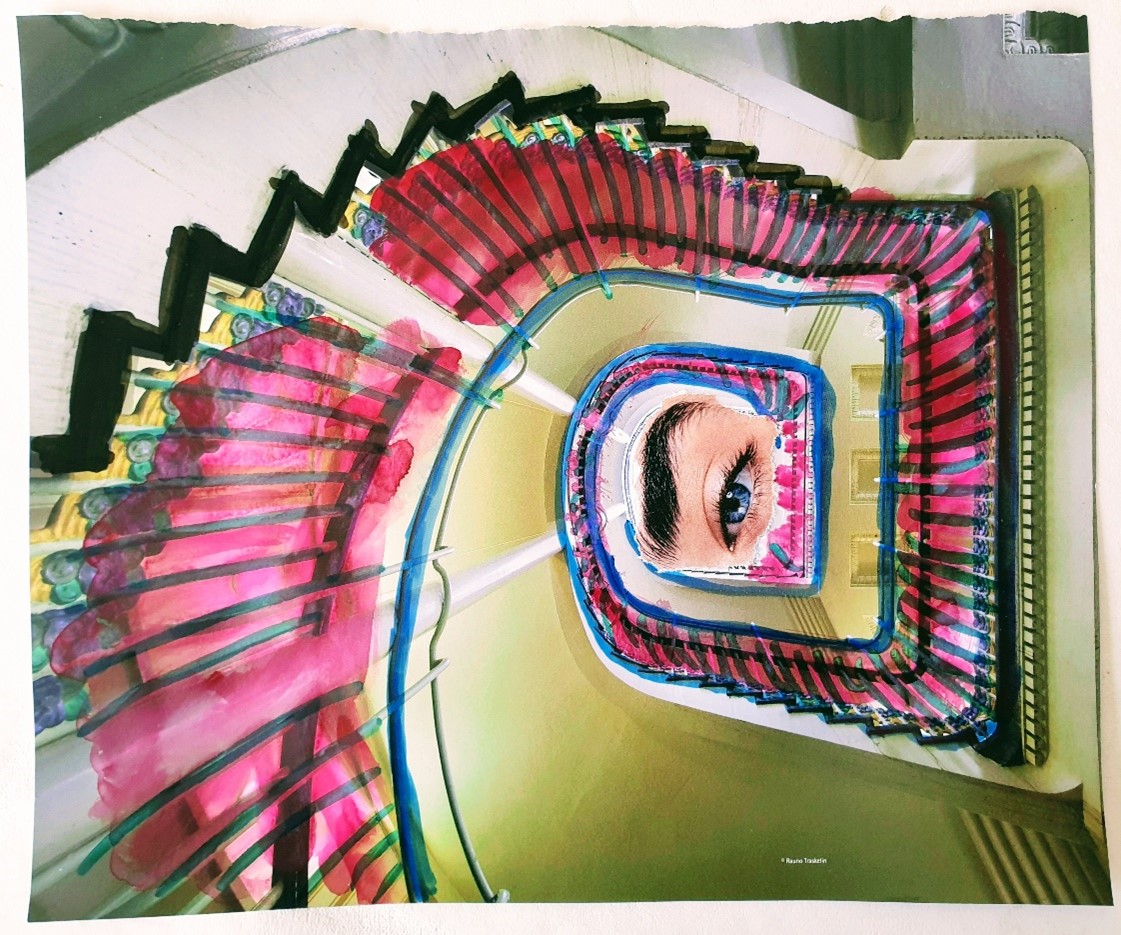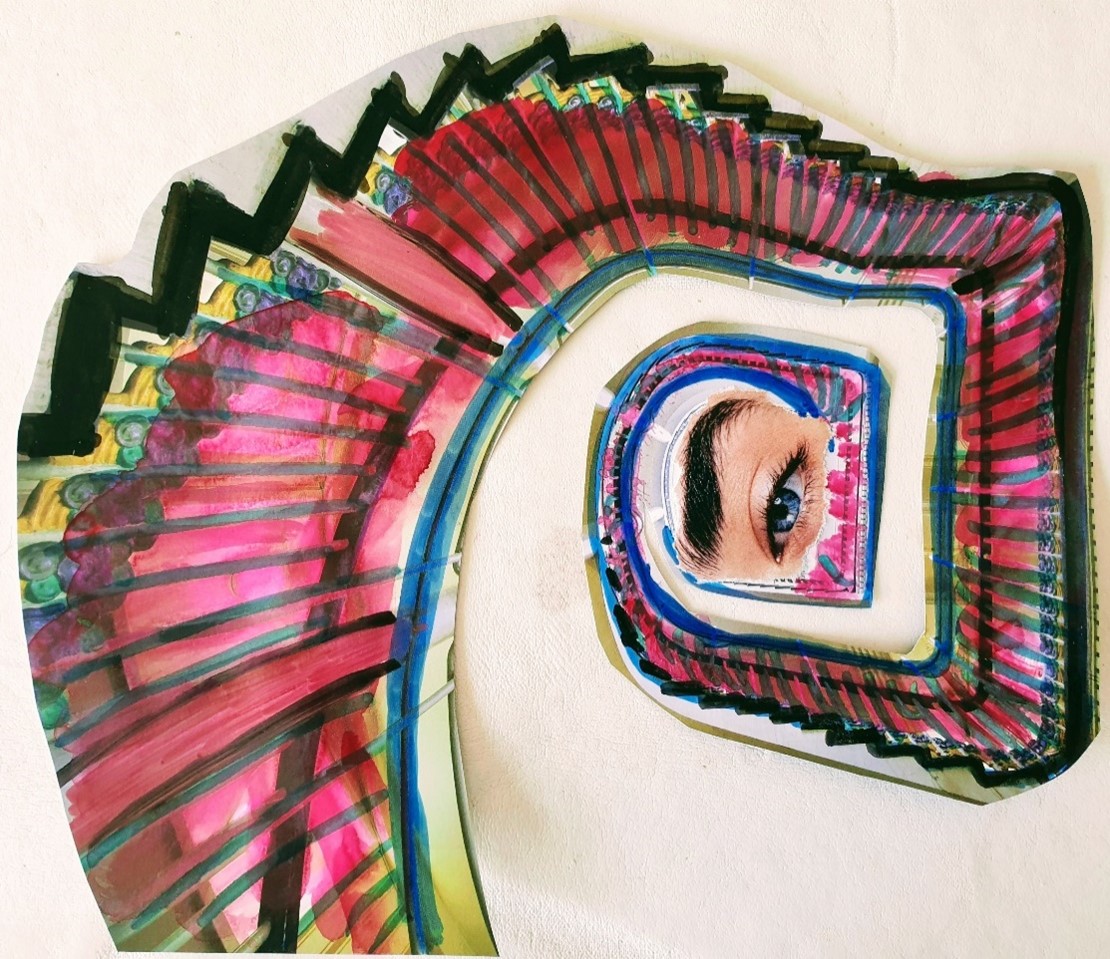Observe
How did Joan Miró begin?
He started by taking a painting that he found or bought. It was, therefore, a work that had not been painted by him but by someone else, a canvas by an unknown artist. He would then rotate it to turn it up upside down and begin painting on it.
Look at the work
- What do you see in it initially? What if we turn it 180°? What can you see now?
- Let's turn it back the way it was. On top of the realistic picture that you could see in detail, there is another depiction, one that is abstract and done in lines and bright colours.
- Look at just the black lines, some of which are more pronounced, while others are less so.
- Look at the other colours one by one: yellow, green, red... The red circumference circles an area of the canvas.
- Find the red, blue and green dots!
You will have noticed that the background image is a landscape with trees and a river. Even though it is upside down, we can still recognise what it shows. That is how the things we see are projected onto our retina, upside down, yet we do not see the things around us upside down. Why is that? Because our brain corrects for this and puts everything the right way up.
All the works tell a story. What story do you think Miró is telling us this time?
Click here to know the title.
Let's transform a picture
- Find an image you like: a postcard, a photograph, a poster, a picture from a shop catalogue or a magazine, etc. Consider why you have chosen it, what it is that drew your attention.
- Before you do anything else, look closely at the picture, rotate it in one direction and then the other, turn it upside down. Choose the position you want to work on it.
- There are many ways to transform the image. One way, for example, would be to cut it using scissors or to tear off some parts. In these cases, we would be altering the outline of the picture, while the content would remain more or less the same, though smaller. If the picture were rectangular or square to start with, once you had altered it, it would be a different shape, perhaps irregular, and smaller.
- Another way to alter it would be to make holes in it or stick pieces of paper or other smaller images on it. If we make holes in it and look at the image, the open spaces will allow us to see what's behind.
- Yet another way would be to draw on it and add colours. We could draw around the outline of one of the elements in the image or do something completely different. If we follow the outlines, we will be making that redrawn element more prominent. If we add a completely new design, there will be a visual clash with the picture below.
- What would be a good title?



Material: printed image; optional items: scissors, pencil, pen, plain or coloured pieces of paper, coloured pencils, coloured crayons, marker pens, other printed images, gouache, etc.
Creative Families is an activity for experimenting in art as a family. In the foundation's rooms, families can discover the artist's universe and, once back at home, using the website, can put their own creativity to the test.




